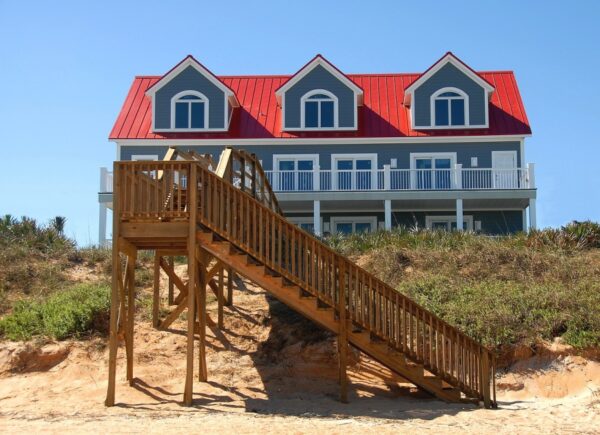Are Urban-Dwellers Leaving the City?

America’s big cities have for years, been drawing people in thanks to the robust employment opportunities, culture and nightlife, higher-paying jobs, and the general excitement these locations can bring to your life.
The concept of heading to the office and then spending the evening exploring the city was one that appealed to many, but the pandemic is causing people to rethink their lifestyles.
After the coronavirus pandemic, widespread lockdowns rolled through the U.S., heavily affecting cities like New York, which saw a tremendous toll from the outbreak.
Along with restaurants, museums, and theaters closing, many perhaps indefinitely, most employers started asking some if not all of their employees to work from home. Those factors may lead to increased home demand in suburban areas and smaller cities, and for some, perhaps even rural areas.
Working From Home Creates Residential Flexibility
There was for years of discussion about companies offering more work-from-home opportunities. For some employees, telecommuting was an option, but still yet for many others, it wasn’t.
Then, after non-essential businesses were required to close down based on state and local mandates, working from home was no longer an option, but a requirement. Companies scrambled to piece together work-from-home policies, but now that we’re several months in, it’s becoming a lot smoother for many.
The vast majority of employers, according to Gartner, plan to increase their number of permanent work-from-home positions.
That means that not only will employers have the potential to save on pricey city office buildings, but they may be able to hire employees who live anywhere in the world. Facebook recently announced that they would be offering work-from-home permanent positions, but they would adjust pay scales according to location since employees wouldn’t be forced to live in the expensive Silicon Valley area.
Other Ways the Pandemic is Changing City Attitudes
It’s not just the work-from-home element that’s making some city residents rethink things.
With coronavirus came a fear of infection, and based on what we know now, shared living environments such as city apartments may up the risks. There are stairways, elevators, lobbies, and even air conditioning systems that could be potential vectors of transmission for COVID-19.
During the lockdown, some people living in cities also started to feel that they didn’t have the yard and outdoor space they’d like, and perhaps that they were paying too much for a lifestyle that they no longer got in exchange for that price. Living in a tiny apartment can be trying even in the best of times—in the worst, it may feel impossible. Check out these apartments for rent in peoria az
Shark Tank investor Robert Herjavec recently told CNBC he believes the coronavirus pandemic has changed attitudes about living in cities to the point that it will alter the real estate market for years to come.
He described what’s happening now as one of the biggest moves from urban areas to the suburbs since the 50s or 60s.
One Redfin study found 50% of respondents from Boston, New York, Seattle, and San Francisco said they would move if they found they had the option to work from home permanently.
New York’s Real Estate Market Is Already Feeling the Effects
According to realtors in the areas around New York, they’ve seen a tremendous increase in people looking for single-family homes in areas like Connecticut, New Jersey, and upstate New York.
That’s already taking its toll on the New York market. Apartment vacancy in June was 3.67%– a record high.
There was an 85% increase in apartments listed that month compared to June of last year.
Realtors have said it’s not just New York where people are making a move. It’s also being seen in other areas, such as California’s cities.
Competition Heats Up in the Suburbs
Some of the cities that people seem to be considering if they’re looking to move away from urban areas include not only the New York suburbs but also cities in South Florida, Phoenix, and Sacramento. Long Island and Westchester, Connecticut are also seeing a surge in demand. There are in fact bidding wars going on in some of these locations, and real estate experts say you should start looking now if you’re considering a move.
Some buyers are thinking less about the effects of the pandemic and more about moving to places that are more affordable and have lower taxes—tax-friendly states include Florida, Texas, Tennessee, and Arizona.
Sellers have the opportunity to capitalize on the shift. Without a lot of inventory in many areas and low-interest rates, prices are going up, some rapidly.
Buyers, along with those searching for single-family homes, are looking for lifestyle features. They want the things they couldn’t get in the city, particularly as more people are spending the majority of their time at home.
These features include pools, large yards, home offices, and spaces for home gyms.
The most demand for homes is being seen in those turnkey properties, so sellers should keep that in mind.
It’s early to tell how long the move from the cities to the suburbs will continue, although some real estate analysts are forecasting it will be quite some time before cities’ real estate markets recover.




